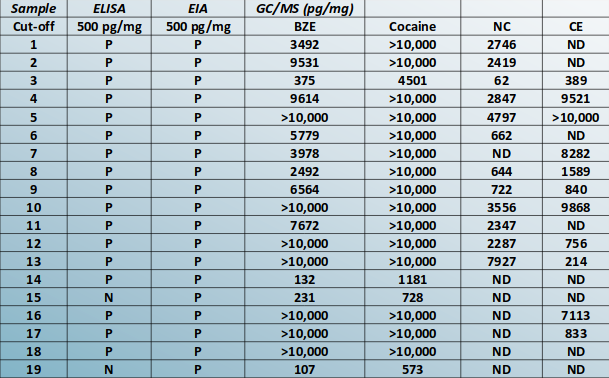Introduction
Hair is a useful specimen for the detection of long-term drug use. In general, drug concentrations in hair are lower than those identified in other matrices such as urine and blood. Further, specimen volume may be limited, so sensitive screening methods are necessary. Following cocaine use, the main drug detected in hair is the parent drug itself, so a screening immunoassay should be targeted to cocaine.
Methods
* Hair from cocaine users (n = 19); drug free volunteers (n = 20)
* Cut into small pieces; weigh out 10 mg
* 0.1 M phosphate buffer (pH 2.7; 0.5 mL)
* Incubate (3 hrs/75℃).
* Analyze supernatant using ELISA; and via homogeneous immunoassays (EIA) on an Olympus 400 platform
* For ELISA, the supernatant was diluted 1:5 with PBS before plating
* For EIA, 10µL of supernatant was used, making the process compatible with most commercial chemistry analyzers
Cross- Reactivity

Summary: The assay is precise, sensitive, and conducive to rapid hair screening using commercial chemistry analyzers
Results
Screening cutoff : 500 pg/mg (recommendation: Proposed Federal Guidelines 2004)
Precision at 250, 500, 1000, 2500 pg/mg: EIA intra-assay: 7.1%, 12%, 9.3% and 3.8%
All negative specimens screened negatively using both ELISA and EIA; positive screen results are shown

Disclosure: Immunalysis Corporation manufactures and distributes the immunoassays described in this presentation
SOFT 2008
To view the full study and its data, visit this link.
Looking for equipment or accessories for your homogeneous immunoassay applications? Check out our featured products below.